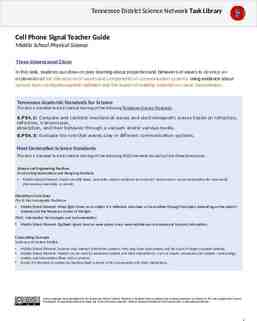GA and NextGen How technologies like WAAS and ADS-B will change
62 Slides8.05 MB
GA and NextGen How technologies like WAAS and ADS-B will change your flying! Presented By Claire Kultgen
Overview 1. TIS 2. ADS-B FIS-B TIS-B ADS-R 3. WAAS 4. T-Routes and GPS MEAs Questions Chat Pilot Information Center 1800-USA-AOPA [email protected]
Who’s Here Current Age A. B. C. D. 20-35 35-45 45-55 55
Who’s Here Certificates and Ratings (highest held) A. None (Yet!) B. Private C. Instrument D. Commercial or ATP
Why Are You Here A. I just want to learn more B. I work in the industry (not as a pilot) C. I’m a professional pilot and want to know how this affects my career D. I’m trying to plan for future expenses for my plane E. Other
Funding and Resource Allocation Slow and Systematic Transition LORAN, NDBs, VORs – It’s OKAY Systematic – Recently the FAA proposed to cut 154 approaches – AOPA reviewed and sent notices to local pilots. All 22 approaches AOPA opposed will be retained.
TIS .NowGen NOT to be confused with TIS-B 1st generation traffic Radars “Uplink” traffic to Mode S transponders 10,000 Mode S transponders sold Aircraft without operating transponders invisible to TIS Only works in radar coverage
Terminal Radar Upgrades ASR 7, ASR 8 – Older radar systems – Support TIS – AOPA has a good report on TIS ASR 11 – New radar systems – Do NOT support TIS Because FAA chose not to purchase needed software components
TIS Capable Radar Sites TIS sites proposed to remain active Proposed TIS sites to be decommissioned*
TIS In Action Transponder Info
TIS In Action Traffic Info I’ll send some traffic information up! A Mode S Transponder!!!
Garmin 430 Display
TIS FAQ Should I invest in TIS? – “Since the vast majority of TIS sites are not scheduled for decommissioning at this time, TIS capable Mode S transponders still offer a valuable, low cost safety service. If you fly through over 100 areas that continue to offer TIS, a Mode S transponder will increase your traffic awareness in busy terminal areas.” Garmin.com
TIS Questions
ADS-B Basics ADS-B is the FUTURE Crucial component of NextGen WILL replace radar Tested in Alaska Capstone, Ohio Safe Flight 21 Automatic Dependent Surveillance Broadcast
ADS-B Benefits Air-to-air surveillance More accurate Faster update rate (every second) Reduced infrastructure costs Enhanced Coverage – Gulf of Mexico Enhances SA and safety More
ADS-B Out Transmission of position, altitude, etc. “Squits” 2x second GPS based position, velocity, ID, etc This is what will be required!
ADS-B Out In Action GBT (Ground Based Transceiver)
ADS-B In The Good Stuff Weather and Traffic – No Subscription!
ADS-B Components Aircraft squitting ADS-B out – Aircraft standards - Fall 2009 Ground Based Transceivers – ITT Contract – On target, on budget – 2013 fully deployed
“Dual”ing Datalinks UAT 1090 ES AirTransport/Above 180 Global Bandwidth Issues TIS-B GA / Below FL180 US More Robust TIS-B FIS-B Opposite datalink’s can’t talk to each other!
FIS-B Flight Information Services Broadcast NexRad Radar Current Conditions Terminal Forecasts Significant Weather Advisories Flight Restrictions (TFRs) Special Activity Airspace Status – MOAs, Restricted Areas, etc.
TIS-B NOT to be confused with TIS Uplink of Non ADS-B Traffic (transponders) From GBTs to Aircraft Rebroadcast of Radar Data TRANSITIONAL
TIS-B In Action Transponder Info GBT (Ground Based Transceiver)
TIS vs. TIS-B TIS TIS-B Uplink of transponder/ radar traffic Uplink of transponder/ radar traffic Radar to transponder GBT to ADS-B In Receiver Only works in areas covered by radar with TIS capability Works in areas of radar coverage and/or GBT coverage
TIS-B outside of Radar Ra dar Co ver age TIS-B GBT *FAA Proposal doesn’t provide for this Transponder Info
ADS-R 1090 ES UAT To Address to Dual Datalink Issues
ADS-R 1090 ES UAT GBT (Ground Based Transceiver)
ADS-R ADS-R Rebroadcast!!! GBT (Ground Based Transceiver)
The Proposal FAA Proposal in 2007 ADS-B Out Required: – – – – Class A, B, C Above 10,000 Today’s Transponder Airspace January 1, 2020 AOPA submitted extensive comments Committees, Committees, Committees Final Rule – Expected Spring 2010
AOPA’s Position Basics Supported transition to satellite navigation for 20 years AOPA Concerns 1. Tangible benefits needed .but hard to identify with current proposal 2. Moves some ATC costs to aircraft - Paid for by pilots 3. Concerns with dual datalink 4. Affordability
More Questions than Answers No black and white answer right now Several avionics manufactures working on exciting products Stay tuned to what’s on the market Stay tuned to AOPA Pilot magazine and other resources GPS needed, but may be integrated in ADS-B out transceiver
Current Expansion
Future Coverage 2013
The Sunshine-B State
Status GOMEX December 2009 – ATC service in an area never before served – Now available in Louisville and Philly, Juneau coming soon – 2013- available nationwide to those equipped
Learn More
www.adsb.gov
ADS-B Questions
What is WAAS? Wide Area Augmentation System Fixes traditional GPS by augmenting signals – Enhances accuracy and integrity Introduced in 2003 More than just lower mins!
WAAS Architecture 38 Reference 3 Master 4 Ground Stations Stations Earth Stations 2 Geostationary 2 Operational Satellite Links Control Centers
Please Remember! Nothing on the ground is communicating directly to your aircraft!
Accuracy Specification – 7.6 m x 7.6 m or better 95% of the time – Category I like precision Measured – .9 m x 1.3 m
Integrity Improved ability to warn pilots of bad signals 1x10-7 chance errors will go undetected – Better than RAIM – 6 seconds to: Fix itself Warn you
WAAS System Benefits Highly accurate North American coverage Extremely easy to use – Loading the approach is the hard part – Missed loads automatically Limited infrastructure 40,000 equipped Nothing on-airport needed Precision approach possible at any airport – – – – LPV’s now outnumber ILS’ LPV costs 50k v. ILS up to 1 million 2,037 as of April 8, 2010 More alternate options
With WAAS You Can Skip the baro correction Fly an LPV, LP Rely on GPS for ALL phases of flight
The Name Game RNAV VOR/DME, DME/DME, INS, IRS and GPS WAAS approaches – Pick your mins GNSS GPS, GLONASS, Galileo, Beidou PBN RNAV RNP AV LN LNAV LNAV *RNP has on board performance monitoring and alerting LP V /VNAV LPV
LNAV Basic GPS approach MDA 400’ above runway Same as an GPS approach No WAAS needed
LNAV V Cool stuff from Garmin won’t see it on a chart “Advisory glideslope” Really just an LNAV NOT an LNAV/VNAV or LPV MDA 400’ above runway Provides guidance for a stabilized approach
LNAV / VNAV Not a WAAS Approach DA 350’ above runway Can fly with WAAS Really for other types of RNAV – Baro V-Nav – RNP
LPV The good stuff! WAAS Only 200’
LP Will be charted as . LP Coming soon! WAAS only No vertical nav MDA 300’ RNAV (GPS) – The protected area for LP approaches is considerably smaller than an LNAV lower MDA
How Low Can You Go? { GPS 400’ LNAV 400’ LNAV V 400’ LNAV/VNAV 350’ LPV 200’ LP (coming soon) 300’
Where’s my LPV? Instrument Flight Procedures Production Plan TPP out to 04/05/2012 FAA goal 300/year How to get an LPV – AOPA Report – “Establishing an Instrument Approach” – Airport Manager
Additional Resources Manufacturer Great info in the equipment manuals – (Long, but a MUST read!) Your high tech airplane only makes you safer if you know how to use it. Unfortunately, statistically, many don’t yet know how.
Other GPS Goodies Q&T routes GPS MEAs – now 90
Questions Pilot Information Center 1-800-USA-AOPA Feedback Welcome!



































































